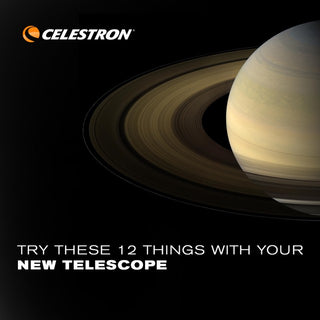What's up in the Sky 2021
February 4, 2021
For a downloadable version, click here
 |
January 2, 3 - Quadrantids Meteor Shower. Observers in the Northern Hemisphere will need to brave the winter’s chill to catch this shower. The Quadrantids can produce up to 40 meteors per hour at its peak. It is produced by an extinct comet, 2003 EH1, which was discovered in 2003. The shower runs from January 1-5, peaking on the night of January 2 and the morning of January 3. This year, a waning gibbous moon will block the faint meteors, but great views are still possible from dark sky locations after midnight. Meteors will radiate from the constellation Bootes but may appear anywhere in the sky. For information on how to observe meteor showers, click here. Visible worldwide. |
 |
January 24 - Mercury at Greatest Eastern Elongation. The planet Mercury reaches its point of eastern elongation at 18.6 degrees from the Sun. Mercury is a notoriously tricky planet to observe due to its proximity to the Sun, but this is one of the best days to try since it will be at a high point above the horizon in the evening sky. Look for the planet low in the western sky just after sunset. For information on how to observe Mercury, click here. Visible worldwide. |
 |
March 6 - Mercury at Greatest Western Elongation. The planet Mercury reaches its westernmost point of elongation at 27.3 degrees from the Sun. Mercury is a notoriously tricky planet to observe due to its proximity to the Sun, but this is the best day of 2021 to try, if you’re willing to wake up early. The tiny planet will be at its highest point above the horizon in the pre-dawn sky. Look for it low in the east just before sunrise. For information on how to observe Mercury, click here. Visible worldwide. |
 |
April 22, 23 - Lyrids Meteor Shower. The Lyrids is an average meteor shower that produce about 15 meteors per hour (with a rare surge of 100 meteors per hour) at its peak with dust trails that last for several seconds. The meteors come from the dust particles left behind by comet C/1861 G1 Thatcher, which was discovered in 1861. This year, the shower peaks on the night of April 22 and the morning of April 23. Meteors will radiate from the constellation Lyra but may appear anywhere in the sky. For information on how to observe meteor showers, click here. Visible worldwide. |
 |
April 27 - Full Moon, Supermoon. With springtime in full swing, we enjoy the first supermoon of the year. Early Native Americans named this the Pink Moon, not due to its color, but because its appearance corresponded with the arrival of moss pink or wild ground phlox, one of the first spring flowers. Don’t forget to listen to the classic song “Pink Moon” by Nick Drake! Visible worldwide. |
 |
May 6, 7 - Eta Aquarids Meteor Shower. The Eta Aquarids is one of the best meteor showers of the year for Southern Hemisphere observers, producing up to 60 meteors per hour at its peak. (Northern Hemisphere observers will have a slightly less dazzling show, with about 30 meteors per hour at peak.) The meteors come from the remains of Halley’s Comet. This year, the shower peaks on the night of May 6 and the morning of May 7. The second quarter moon will block the faint meteors, but observers can still catch great views from dark sky locations after midnight. Meteors will radiate from the constellation Aquarius but may appear anywhere in the sky. For information on how to observe meteor showers, click here. Visible worldwide. |
 |
May 17 - Mercury at Greatest Eastern Elongation. 2021 is a great year to view the usually elusive Mercury! In mid-May, we get a third opportunity to view the tiny planet at elongation. This time, it will be 22 degrees from the Sun at its highest point above the horizon in the evening sky. Look for Mercury low in the western sky just after sunset. For information on how to observe Mercury, click here. Visible worldwide. |
 |
May 26 - Full Moon, Supermoon. The second Supermoon of the year, the Flower Moon gets its name from the abundant springtime blooms of early May. Early Native Americans also called this the Corn Planting Moon and the Milk Moon. Visible worldwide. |
 |
May 26 - Total Lunar Eclipse. The moon will completely pass through the Earth's shadow, or umbra, and will darken to a red hue. Visible in western North America, parts of eastern Asia, Japan, Australia, and the Pacific Ocean. |
 |
June 10 - Annular Solar Eclipse. The famed “Ring of Fire” around a darkened Moon will delight observers during this annular eclipse. This phenomenon occurs when the Moon is too far away from the Earth to completely cover the Sun. The Sun's corona is not visible during an annular eclipse. Annular eclipse visible in eastern Russia, Canada, Arctic Ocean. Partial eclipse visible in most of Russia, northeastern United States, and Europe. |
 |
June 24 - Full Moon, Supermoon. The third and last supermoon of the year, The Strawberry Moon gets its name from early Native American tribes. It signals the time of year to gather ripening fruit and coincides with strawberry picking season. Visible worldwide. |
 |
August 2 - Saturn at Opposition. The ringed planet will be at its closest approach to Earth and fully illuminated by the Sun. Saturn will be brighter than any other time of the year and visible all night long. This will be the best time to view and photograph the ringed planet and its moons. A medium-sized or larger telescope will allow you to see the rings and several of its brightest moons. For information on how to observe Saturn, click here. Visible worldwide. |
 |
August 12, 13 - Perseids Meteor Shower. The Perseids is one of the most widely observed meteor showers every year due to its timing during the warm summer months in the Northern Hemisphere and its potential to produce up to 60 meteors per hour at its peak. It is produced by Comet Swift-Tuttle, which was discovered in 1862. This year, the shower peaks on the night of August 12 and the morning of August 13. The waxing crescent moon will set early, leaving dark skies great for observing. The best views will be from a dark location after midnight. Meteors will radiate from the constellation Perseus but may appear anywhere in the sky. For information on how to observe meteor showers, click here. Visible worldwide. |
 |
August 19 - Jupiter at Opposition. The giant gas planet will be at its closest approach to Earth and fully illuminated by the Sun. Jupiter will be brighter than any other time of the year and will be visible all night long. This is the best time to view and photograph Jupiter, the Great Red Spot, and its four Galilean moons. For information on how to observe Jupiter, click here. Visible worldwide. |
 |
August 22 - Full Moon, Blue Moon. A Blue Moon occurs when a season contains four full Moons, which occurs on average every 2.7 years. The Native American tribes called August’s Moon the Sturgeon Moon or Green Corn Moon because sturgeon fish were easier to catch at this time and corn was ready for harvest. Visible worldwide. |
 |
September 14 - Mercury at Greatest Eastern Elongation. The planet Mercury once again reaches a point of elongation, this time 26.8 degrees from the Sun. Look for the planet low in the western sky just after sunset. For information on how to observe Mercury, click here. Visible worldwide. |
 |
October 29 - Venus at Greatest Eastern Elongation. The planet Venus reaches its greatest eastern elongation at 47 degrees from the Sun. This is another ideal time to view Venus since it will be at its highest point above the horizon in the evening sky. Look for the bright planet casually called the “evening star” in the western sky after sunset. For information on how to observe Venus, click here. Visible worldwide. |
 |
November 19 - Partial Lunar Eclipse. The Moon will pass through 97% of Earth's darker shadow, or umbra, and will darken significantly but not completely. This very deep partial lunar eclipse will almost be like a total lunar eclipse but not quite. Visible in most of eastern Russia, Japan, North America, Central America, and parts of western South America. |
 |
December 4 - Total Solar Eclipse. Day turns to night for observers as the Moon will completely block out the Sun, revealing the Sun’s magnificent outer atmosphere known as the corona. Total or partial eclipse visible in South Africa, Antarctica, and the southern Atlantic Ocean. |
 |
December 13, 14 - Geminids Meteor Shower. The Geminids is the king of the meteor showers. It is considered by many to be the best shower of the year, producing up to 120 multicolored meteors per hour at its peak. The shower runs annually from December 7-17 and peaks this year on the night of December 13 and morning of December 14. The best views will be from a dark location after midnight. Meteors will radiate from the constellation Gemini but may appear anywhere in the sky. For information on how to observe meteor showers, click here. Visible worldwide. |


























